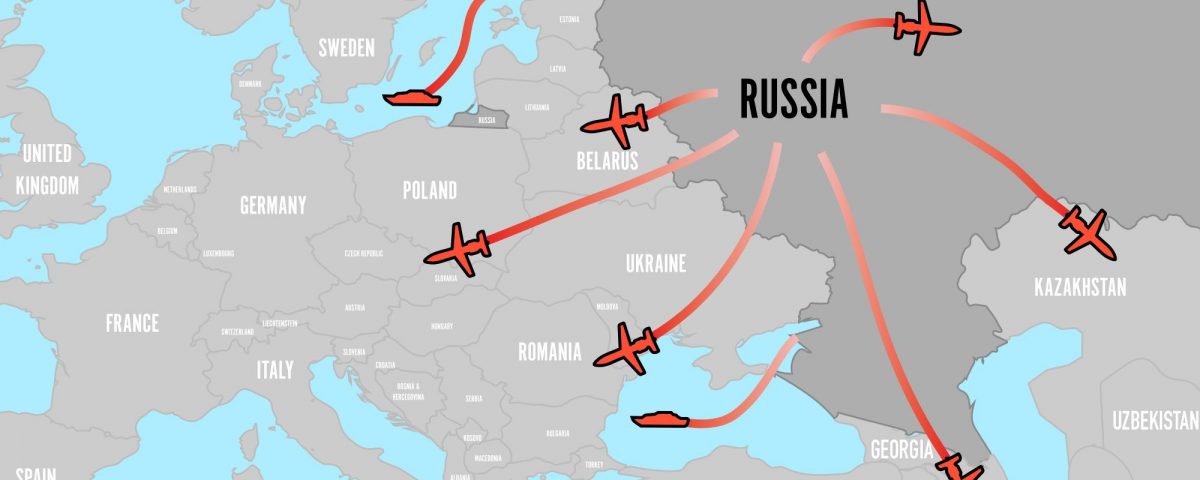The last couple of years saw a series of changes in Kazakhstan’s typical migration patterns caused by an intensification of a rather turbulent geopolitical situation in the region. Russia’s partial mobilization, launched on September 21, 2022, sent a huge migration wave away from Russia to other countries across the globe. The sanctions, however, have significantly altered the geography of relocation for Russian citizens by narrowing its main migration flows down to Kazakhstan and a handful of other states, including other Central Asian states, Georgia, and Israel (Zhumashbekova et al., 2024). As a result, Kazakhstan has received an unprecedented number of migrants over the last two years, and along with it experienced a set of associated implications. In addition, Kazakhstan might experience a new wave of migration from Central Asian countries.
According to the Bureau of National Statistics (BNS) (2024), the number of people who migrated to Kazakhstan reached 17.425 in 2022 and 25.387 in 2023. Among those who moved to Kazakhstan in 2023, the majority were from Russia with 11.711 people and Uzbekistan with 6.519 people. It is notable that the number of migrants from Uzbekistan exceeded the number of Russian migrants in 2022. During the period of January-July of 2024, the migration to Kazakhstan reached 15.937 people, which is 577 people more compared with the same period in 2023. Meanwhile, there has been a vivid decline in the rate of emigration from Kazakhstan to other countries. During the period from January to July 2024, the number of emigrants amounted to 7.799, which is 1.349 people less compared with the same period in 2023 (Bureau of National Statistics, 2024).
Kazakhstan has received 1.084.771 visitors in 2023, which is about %15 more compared with 2022. During the first two quarters of 2024, Kazakhstan was visited by 566.457 people, which is roughly %9 more compared with the same period in 2023, and almost twice as many compared with the same period in 2022 (Bureau of National Statistics, 2024). The majority of people visiting Kazakhstan during the first two quarters were from Russia with %44.6 out of all visitors in 2022, %45 in 2023, and %33 in 2024. Among Central Asian countries, the majority of people who came to Kazakhstan during the first two quarters were from Uzbekistan amounting to 9.403 people in 2022, 16.401 in 2023, and 16.797 in 2024 (Bureau of National Statistics, 2024).
Given the visa-free regulations, the majority of the local migrants used Kazakhstan as a transit point to explore other destinations, including Türkiye, Uzbekistan, Kyrgyzstan, Azerbaijan, and Israel. The independent research by The Bell concludes that the number of Russian citizens who remained in Kazakhstan in July 2024 does not exceed 80.000 people (The Bell, 2024), which supports the statements made by the Russian Consulate General in Almaty, Dmitri Turayev in February of the same year (Mukatayeva, 2024).
Nevertheless, such an unprecedented influx of migrants could have a significant impact on the local labor market. Theoretically, migration possesses the capacity to affect the skills composition of the local workforce and invoke alterations in the wage structure across the local labor market, i.e., the influx of migrants can reduce the wages of those local workers with competencies similar to migrants’. This is highly evident for those industries that are less popular among the local workforce. On the positive side, the migration can lead to a reduction of the differentials between the high- and low-skilled workers and grant the opportunity to leverage the influx of skilled workers to fill the gaps in qualified personnel in sectors like education, medicine, consulting, and IT, which typically experience the shortages in labor force (Kappasova et al., 2024).
The study of the job discrimination patterns in Kazakhstan by Kappasova et al. (2024) suggests that Russian-migrant applicants are less likely to receive job offers compared to Kazakh natives. The proportion of discrimination work bias tends to be higher in high-skilled jobs sectors where the call-back rates for Russian migrants are %9 lower compared to Kazakh natives. Further estimates suggest a difference between the reception patterns regarding the Russian migrants and those ethnic Russians born in Kazakhstan. Accordingly, the Russian-migrants are %7.7 less likely to receive interview invitations compared to ethnic Kazakhs while ethnic Russians born in Kazakhstan have only %1.6 lower chances of getting invited for an interview. Nevertheless, there is no evidence against the patterns of discrimination against migrants in general as there are no signals of bias against Kyrgyz migrant workers. Thus, despite the predominant concerns, there is not enough evidence to support the fear of Russian migrants taking the jobs of the local natives.
The influx of Russian ethnic migrants in the first quarter of 2024 has somewhat dwindled compared with the last quarter of 2023, and the majority of migrants moved to explore other geographic destinations. The recent instabilities in Russia, however, have orchestrated the possibility of a new influx of migrants from other countries, including Tajikistan and Azerbaijan (Zhumashbekova et al., 2024). In other words, it can create an incentive to move to Kazakhstan, thereby increasing the number of working migrants in Kazakhstan to a significant extent, which is already evident with the migrants from Uzbekistan amounting to the second highest number of migrants just behind Russian migrants (Bureau of National Statistics, 2024). Some, however, disagree and insist that the wage differences between Russia and Kazakhstan will impede the influx of migrants from Central Asia to Kazakhstan (Isabayeva, 2024).
In essence, Kazakhstan has experienced an unprecedented influx of migrants over the last several years with Russian and Uzbek migrants constituting the majority of those coming to Kazakhstan. The majority of those who came to Kazakhstan have moved on to explore other geographical destinations with only a small part remaining in Kazakhstan. Despite the initial concerns, the analyses argue against the fears of Russian migrants taking jobs from Kazakh natives regardless of the job sector and the qualifying characteristics of the job. The recent instabilities in Russia might result in a new influx of migrants from Central Asian countries.
Accordingly, the migration from Russia is expected to go back to typical values when considering the data from January to July of 2024. The new data, however, is to be expected, and so is the more detailed analysis of the current status quo. Specifically, it is important to continue comparing the monthly data on visitors and migrants during the period starting in September 2022, when the partial mobilization in Russia took place, with the same periods in 2024 in the future, as this will provide us with more concrete and lasting results.
References
Bureau of National Statistics of Kazakhstan (2024). External migration by country. Retrieved from https://stat.gov.kz/en/industries/social-statistics/demography/dynamic-tables/. Accessed on 14.09.2024.
Bureau of National Statistics of Kazakhstan (2024). Statistics of tourism: dynamic tables. Retrieved from https://stat.gov.kz/en/industries/business-statistics/stat-tourism/dynamic-tables/. Accessed on 17.09.2024.
Bureau of National Statistics of Kazakhstan (2024). The number of incoming visitors served by nationality. Retrieved from https://stat.gov.kz/en/industries/business-statistics/stat-tourism/dynamic-tables/. Accessed on 12.09.2024.
Isabayeva, Saule (2024). Russia, Kazakhstan or Europe: what will the migrants from Central Asia choose?. Retrieved from https://spik.kz/1955-rossija-kazahstan-ili-evropa-chto-vyberut-migranty-iz-srednej-azii.html. Accessed on 14.09.2024.
Kappassova, Gulsara, Altybassarova, Meiramgul, Yelmuratov, Gani, Rakhimbaeva, Madina, and Polomarchuk, Boris (2024). Migration Processes in the Republic of Kazakhstan: Regularities, Problems, and Prospects. Dve domovini 59: 1-27.
Mukatayeva, Nargiz (2024). Up to 80 thousands migrants from Russia are in Kazakhstan. Retrieved from https://www.sarbaz.kz/v-centre-vnimaniya/2501-do-80-tysiach-relokantov-nakhodiatsia-v-kazakhstane/. Accessed on 17.09.2024.
The Bell (2024). The Bell research: about 650 thousands people have left and never returned to Russia after the start of the war. Retrieved from https://thebell.io/posle-nachala-voyny-iz-rossii-uekhali-i-ne-vernulis-bolshe-700-tysyach-chelovek-issledovanie-the-bel. Accessed on 13.09.2024.
Zhumashbekova, Samal, Kirdasinova, Kasiya, Talapbayeva, Gulnar, Bekmagambetova, Gulmira, Nurpeissova, Aigul, Orynbekova, Gulnar and Aldeshova, Samal (2024). Assessment of the migration processes on the example of Kazakhstan. Regional Science Policy & Practice, 16 (3): 1-20.
Note: The views expressed in this blog are the author’s own and do not necessarily reflect the Institute’s editorial policy.

